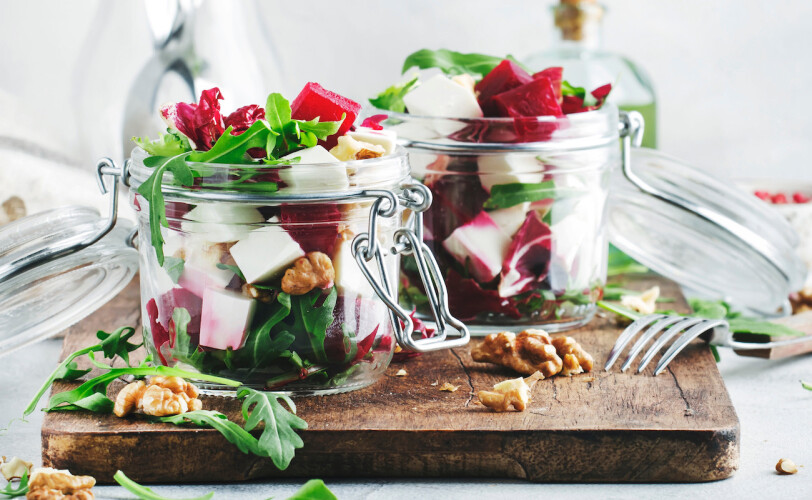Vascular health and nitric oxide: What's the link?
Cardiovascular disease is part of my family history and is one of the main reasons I decided to study nutritional therapy. As I researched food and how it can support our overall health, I became increasingly interested in nitric oxide (NO) and how it plays a vital part in vascular health. Hope you find the information to follow useful and if you have any questions, please do get in touch.

What is nitric oxide?
It is a signalling molecule that plays a crucial role in maintaining vascular health. Unfortunately, as we age, its natural production reduces. But, it’s good to know that many natural plant-based foods can promote production, with the following providing the most benefits:
- beetroot
- celery
- garlic
- kale
- spinach
- watermelon
- pomegranate
- cacao
Here are some of the benefits of nitric oxide for vascular health:
Vasodilation
Nitric oxide is a potent vasodilator, meaning it relaxes and widens blood vessels. This allows for increased blood flow and improved circulation throughout the body. Vasodilation helps reduce blood pressure, prevents blood clots, and enhances oxygen and nutrient delivery to tissues.
Blood pressure regulation
Nitric oxide helps regulate blood pressure by relaxing the smooth muscles of blood vessels, thereby reducing resistance to blood flow. This helps maintain normal blood pressure levels and reduces the risk of hypertension.
Anti-inflammatory effects
Nitric oxide has anti-inflammatory properties that help reduce inflammation in blood vessels. Chronic inflammation can lead to the development of atherosclerosis, a condition characterised by the buildup of plaque in the arteries. By reducing inflammation, nitric oxide helps prevent the progression of atherosclerosis and reduces the risk of cardiovascular diseases.
Platelet inhibition
Nitric oxide inhibits platelet aggregation, preventing the formation of blood clots. Platelet aggregation is a crucial step in the formation of blood clots, which can lead to heart attacks and strokes. By inhibiting platelet aggregation, nitric oxide helps maintain normal blood flow and prevents clot formation.
Endothelial protection
Nitric oxide helps protect the endothelium, the inner lining of blood vessels, from damage. The endothelium plays a critical role in maintaining vascular health by regulating blood flow, preventing clotting, and maintaining the integrity of blood vessels.
Overall, nitric oxide plays a crucial role in maintaining vascular health by promoting vasodilation, regulating blood pressure, reducing inflammation, preventing clot formation, and protecting the endothelium. Its benefits contribute to improved cardiovascular health.
Beetroot and walnut salad recipe
Here is a quick easy recipe to support your own nitric oxide production:
Ingredients
- 2 medium-sized beetroots, baked and chopped into cubes
- 1 cup spinach leaves, chopped
- 1/4 cup walnuts, chopped
- 1/4 cup feta cheese, crumbled
- 2 tablespoons extra virgin olive oil
- 1 tablespoon lemon juice
- Black pepper to taste
Method
- In a large bowl, combine the grated beetroots, chopped spinach, walnuts, and feta cheese.
- In a separate small bowl, whisk together the olive oil, lemon juice, and pepper.
- Pour the dressing over the salad mixture and toss until well combined.
- Serve immediately or refrigerate for later use.
This recipe is intended to support cardiometabolic health, but if you want personalised support with diet and lifestyle in this area please get in touch.
References
1. Lundberg, J. O., & Weitzberg, E. (2008). NO generation from nitrite and its role in vascular control. Arteriosclerosis, Thrombosis, and Vascular Biology, 28(11), 216-222. https://doi.org/10.1161/ATVBAHA.107.160689
2. Bryan, N. S., & Grisham, M. B. (2007). Methods to detect nitric oxide and its metabolites in biological samples. Free Radical Biology and Medicine, 43(5), 645-657. https://doi.org/10.1016/j.freeradbiomed.2007.05.019
3. Hord, N. G., Tang, Y., & Bryan, N. S. (2009). Food sources of nitrates and nitrites: the physiologic context for potential health benefits. The American Journal of Clinical Nutrition, 90(1), 1-10. https://doi.org/10.3945/ajcn.2008.27131
4. Lundberg, J. O., & Weitzberg, E. (2010). NO generation from inorganic nitrate and nitrite: Role in physiology, nutrition and therapeutics. Archives of Pharmacal Research, 33(6), 881-889. https://doi.org/10.1007/s12272-010-0612-5
5. Kapil, V., Milsom, A. B., Okorie, M., Maleki-Toyserkani, S., Akram, F., Rehman, F., Arghandawi, S., Pearl, V., Benjamin, N., Loukogeorgakis, S., MacAllister, R., Hobbs, A. J., & Webb, A. J. (2010). Inorganic nitrate supplementation lowers blood pressure in humans: role for nitrite-derived NO. Hypertension, 56(2), 274-281. https://doi.org/10.1161/HYPERTENSIONAHA.110.153536

Find a nutritionist dealing with Heart disease
All nutrition professionals are verified



